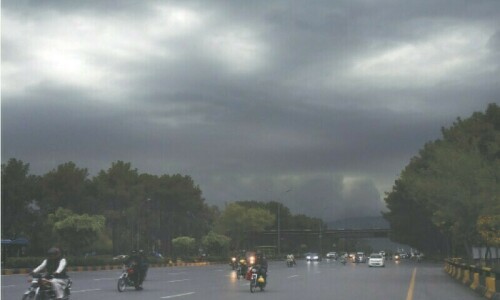I JOINED UNDP Pakistan one year ago, and celebrating Aug 14 was one of my first activities. Dressed in green and white with flags all around, colleagues chanted “Pakistan Zindabad”, a message I heard all around the country as I made my way from Karachi and Lahore, to Quetta and Peshawar, to upper Chitral, Hunza and Gilgit. From glaciers to shorelines, and everything in-between, Pakistan is a proud nation, blessed with its beautiful geography, but mostly with its people.
Pakistan at 77 is also complicated. Still recovering from Covid 19 and a devastating 2022 flood, it is critically vulnerable to climate change, has survived a macroeconomic cliff-hanger in 2023 that is slowly showing signs of abatement, and is facing debt and security challenges that leave people and authorities alike on edge. Lingering in the background are persistent reform questions which, if resolved, will fix the fundamental governance architecture that steadies the country on an inclusive, sustainable development path.
Data reveals this complicated storyline with more nuance. With six years remaining to realise the Sustainable Development Goals, and $53 billion required to do so, alarm bells are ringing with 40 per cent poverty, gaping gender disparities, with Pakistan projected to achieve only 35 out of 169 development targets. Pakistan at 77 is a young country, literally and metaphorically, with 60pc of a rapidly growing population under the age of 30, but with nearly 22 million children out of school and a mere 46pc literacy rate among women and girls.
After decades in upward trajectory in the Human Development Index (measuring health, education and income), Pakistan has fallen from medium to low human development in the 2024 UNDP Human Development Report, with Afghanistan being the only other South Asian nation in this category.
Three areas stand out as particularly promising.
Admittedly, Pakistan is greater than the sum of its statistics, a country with substantial ambition and potential, appearing dormant at times, and masking underlying factors of resilience and connectivity. Among many critical development priorities, three areas stand out as particularly promising:
The first centres around people. Investing in Pakistan’s human capital is an investment in its present and future. At the dawn of the republic, Pakistan’s founding father, Mohammad Ali Jinnah, stated: “...if we want to make this great state of Pakistan happy and prosperous, we should wholly and solely concentrate on the well-being of the people, and especially of the masses and the poor”. Pakistan’s GDP could gain $251bn by 2025 if women are as equally connected to the economy as men. And, away from seeing a youth bulge as a security or poverty risk, domestic investment and productivity can be turbocharged with youth entrepreneurs at the centre, skilled not only for their individual benefit, but as future business leaders. Connecting formal, technical and vocational training to future-ready jobs guarantees a significant return on investment, especially when anticipating a more digitised future of work in Pakistan and globally.
The second area must be readying Pakistan for an economy that is as sustainable as it is resilient in the face of inevitable storms. While Pakistan’s climate adaptation is no longer a choice, identifying more ambitious mitigation targets is a global obligation that Pakistan must undertake. With 40m living without electricity, a just, equitable transition to a green(er) economy powered by cleaner, less carbon-dependant energy is possible in a country endowed with abundant natural resources, and a vibrant private sector committed to renewable, innovative solutions.
The third area foresees Pakistan’s voice in a global context, where multilateralism and interdependence have given way to gridlock, polarisation, protectionism, and uncertainty — concerns tabled for the United Nations Summit for the Future in September.
Prosperity for Pakistan will be strengthened by a country fully present and active on the global scene, committed to fundamental human rights and broad civic engagement, aligned with climate targets, fortified by strong trade — measures that start at home and resonate beyond borders. With critical socioeconomic and institutional reforms already underway, staying the course will project Pakistan as an attractive regional and global connectivity hub.
Pakistan at 77 is a complex development mosaic that I’ve come to learn and appreciate deeply over the past year. We will accompany our national partners and the broader development community along this journey, determined to leave no one behind, resolved to see a Pakistan that is as equitable and inclusive as it is peaceful and prosperous.
The writer is the resident representative of UNDP in Pakistan.
Published in Dawn, August 14th, 2024












































Dear visitor, the comments section is undergoing an overhaul and will return soon.